Key Takeaways:
- Mold growth is a common problem caused by warm, damp environments and can cause health problems and structural damage.
- Mold requires moisture, a food source, and the right temperature to grow.
- Mold can trigger allergic reactions and lead to respiratory problems and structural damage.
- Common causes of mold growth include leaks, poor ventilation, and elevated humidity levels.
- Professional mold removal services have specialized knowledge, equipment, and techniques to effectively remove mold.
- When choosing a mold removal service, consider their license, experience, insurance coverage, and cost estimates.
- The mold removal process includes inspection, containment, removal, cleaning, repair, and preventive measures.
- DIY mold removal can be done for small areas using homemade solutions like vinegar, hydrogen peroxide, and baking soda.
- Take safety precautions and seek professional help for large mold infestations, porous materials, severe health issues, or recurring problems.
- Prevent future mold infestations by maintaining proper ventilation, fixing moisture problems, and scheduling regular inspections.
Welcome to the definitive guide to mold removal services. In this comprehensive guide, we will take an in-depth look at understanding mold infestations, the benefits of hiring professional mold removal services, tips for DIY mold removal, and how to prevent future mold infestations. Mold growth can be a serious issue in any home or building, causing health problems and structural damage if left untreated. By the end of this guide, you will have all the information you need to effectively deal with mold issues.
Understanding Mold Infestations
Mold growth is a common problem that affects many homes and buildings. Understanding how mold grows and the dangers it can pose is crucial in addressing mold issues effectively.
The Science of Mold Growth
Mold is a type of fungus that thrives in warm, damp, and humid environments. It reproduces by releasing spores into the air, which can then settle on surfaces and grow into new colonies. The presence of mold can often be detected by a musty odor or visible signs of discoloration on walls, ceilings, or other surfaces.
Mold requires three key ingredients to grow: moisture, a food source, and the right temperature. Moisture can come from various sources, such as leaking pipes, roof leaks, or high humidity. Common food sources for mold include organic materials like wood, drywall, carpet, and fabric.
The Dangers of Mold Infestations
While mold may seem harmless to some, it can have serious health implications and can cause damage to your property. Mold spores can trigger allergic reactions, such as sneezing, coughing, and respiratory issues, especially in individuals with pre-existing respiratory conditions. Prolonged exposure to mold can also lead to more severe health problems, including asthma, bronchitis, and even fungal infections.
In addition to health risks, mold can also cause structural damage to your home or building. It can eat away at building materials, weaken structures, and ultimately compromise the integrity of your property. Mold can also lead to unpleasant odors, staining, and a decrease in indoor air quality.
Common Causes of Mold Growth
There are several common causes that can contribute to mold growth in homes and buildings. Understanding these causes can help you identify and address mold issues more effectively. Some of the most common causes of mold growth include:
- Excess moisture from leaks or flooding
- Poor ventilation and lack of airflow
- Elevated humidity levels
- Condensation on windows or walls
- Damp basements or crawl spaces
- Leaking pipes or plumbing issues
By addressing these underlying causes, you can prevent mold growth and minimize the risk of further infestations.
Hiring Professional Mold Removal Services
While some mold infestations can be small and easily remedied through DIY methods, larger or more severe cases of mold require the expertise of professional mold removal services. Hiring professionals has numerous benefits and ensures that the mold problem is addressed thoroughly and effectively.
The Benefits of Professional Mold Removal
Professional mold removal services have the knowledge, experience, and specialized equipment to handle mold infestations effectively. Here are some of the main benefits of hiring professionals:
- Thorough inspection and assessment of the mold problem
- Identification of the root cause of the mold growth
- Safe and proper removal of mold colonies
- Prevention of cross-contamination to other areas of the property
- Use of advanced techniques and equipment for mold detection and removal
- Effective treatment and remediation of the affected areas
- Knowledge of local regulations and guidelines for mold removal
- Peace of mind knowing that the mold issue is being handled by professionals
Professional mold removal services can save you time, effort, and potential health risks associated with mold exposure.
How to Choose the Right Mold Removal Service
When choosing a mold removal service, it’s important to do your research and select a reputable and experienced company. Here are some key factors to consider:
- License and certification: Ensure that the company is properly licensed and certified to perform mold removal services in your area.
- Experience and expertise: Look for a company with a proven track record and extensive experience in handling mold infestations.
- Insurance coverage: Verify that the company has liability insurance to protect you and your property in case of any damages during the mold removal process.
- References and reviews: Read customer reviews and ask for references to gauge the quality of their work and customer satisfaction.
- Cost and estimates: Request detailed cost estimates from multiple companies and compare them to find the best value for your money.
By taking the time to find the right mold removal service, you can ensure that the job is done correctly and efficiently.
What to Expect During the Mold Removal Process
When you hire professional mold removal services, they will follow a proven process to address the mold infestation. Here are the typical steps involved:
- Inspection and assessment: The mold removal experts will conduct a thorough inspection of your property to identify the extent of the mold problem and any underlying causes.
- Containment: To prevent the spread of mold spores to other areas, the professionals will set up containment measures. This may include sealing off affected areas and using negative air pressure machines.
- Removal of mold colonies: The experts will use specialized techniques and equipment to safely remove the mold colonies. This may involve physically removing affected materials or using advanced treatments.
- Cleaning and disinfection: After the mold removal, the professionals will thoroughly clean and disinfect the affected areas to ensure no traces of mold are left behind.
- Repair and restoration: If there is any damage to your property caused by the mold, the professionals will undertake the necessary repairs and restoration work.
- Preventive measures: Finally, the mold removal experts will provide recommendations and advice on preventive measures to avoid future mold infestations.
By following this process, professional mold removal services can effectively address the mold problem and restore your property to a safe and mold-free state.
DIY Mold Removal Methods
For smaller, localized mold growth, it is possible to tackle the issue yourself using DIY mold removal methods. However, it is essential to take the necessary precautions and understand the limitations of DIY approaches.
Effective Homemade Mold Removal Solutions
There are several effective homemade solutions that can help in removing mold from surfaces. One popular and natural option is to use a mixture of vinegar and water. Vinegar has antimicrobial properties that can kill mold spores and prevent their regrowth. Simply mix equal parts vinegar and water in a spray bottle and apply it to the affected areas. Let it sit for a few minutes before scrubbing away the mold with a brush or sponge.
Another effective option is hydrogen peroxide, which is a powerful antifungal agent. Mix one part hydrogen peroxide with two parts water in a spray bottle and apply it to the moldy surface. Allow it to sit for around 10 minutes before scrubbing away the mold.
Baking soda is another natural remedy that helps remove mold and absorb moisture. Create a paste by mixing baking soda with water and apply it to the moldy surface. Scrub the area gently using a brush or sponge and rinse with water.
Precautions and Safety Measures for DIY Mold Removal
While DIY mold removal can be effective for small areas of mold growth, it is important to take necessary precautions to protect yourself and prevent further contamination. Here are some safety measures to keep in mind:
- Wear protective gear, including gloves, goggles, and a mask to avoid direct contact with mold spores.
- Open windows and doors to maintain proper ventilation while working with mold.
- Contain the affected area using plastic sheets to prevent the spread of mold spores.
- Dispose of moldy materials properly, following local guidelines and regulations.
- Clean tools and equipment thoroughly after use to prevent cross-contamination.
It’s important to note that DIY methods may not be suitable for extensive or severe mold infestations. In such cases, it’s advisable to seek professional help to ensure proper and thorough mold removal.
When to Seek Professional Help for Mold Removal
While DIY methods can be effective for minor mold issues, there are certain situations where it is best to seek professional help. Consider contacting professional mold removal services in the following scenarios:
- If the mold covers a large area (more than 10 square feet)
- If the mold is growing on porous materials like drywall or carpet
- If the mold is causing severe health issues or allergic reactions
- If there is a recurring mold problem despite DIY efforts
- If you are unsure about the extent of the mold infestation
Professional mold removal services have the expertise, equipment, and techniques to handle complex mold situations safely and effectively.
Preventing Future Mold Infestations
Preventing future mold infestations is crucial to ensure a healthy and mold-free environment. By following a few preventive measures, you can minimize the risk of mold growth in your home or building.
Maintaining Proper Ventilation and Humidity Levels
Proper ventilation is essential to prevent excess moisture and humidity, which create an ideal environment for mold growth. Ensure that your home or building has sufficient airflow by using exhaust fans in bathrooms and kitchens, opening windows regularly, and using dehumidifiers in damp areas.
Keep an eye on humidity levels and maintain them between 30% and 50%. Use a hygrometer to monitor humidity and address any high humidity issues promptly.
Identifying and Fixing Moisture Problems
Moisture problems are one of the main culprits for mold growth. Regularly inspect your home or building for any signs of leaks, water damage, or condensation. Fix plumbing issues, repair roof leaks, and address any damp areas promptly to prevent moisture buildup.
The Importance of Regular Mold Inspections
Regular mold inspections are crucial to detect mold issues early on and prevent them from becoming more severe. Schedule annual mold inspections with professionals who can identify potential problem areas and address them before they become major infestations.
During inspections, professionals will thoroughly examine your property for any signs of mold growth, identify the source of moisture, and provide recommendations for preventive measures.
By following these preventive measures and staying vigilant, you can significantly reduce the risk of future mold infestations and maintain a healthy living or working environment.
Conclusion
Mold growth can be a serious and potentially dangerous problem in any home or building. Understanding the science of mold growth, the dangers it can pose, and the common causes of infestations is crucial in effective mold remediation. While DIY methods can be useful for small mold issues, larger or more severe cases require the expertise of professional mold removal services. They have the knowledge, experience, and equipment to handle mold infestations effectively. By taking preventive measures, such as maintaining proper ventilation, promptly addressing moisture problems, and scheduling regular mold inspections, you can minimize the risk of future mold infestations. Armed with this comprehensive guide, you now have the knowledge and tools to tackle mold issues head-on and create a safe and mold-free environment.
FAQ
Question: What are the dangers of mold infestations? Answer: Mold infestations can cause allergic reactions, respiratory issues, and structural damage to your property.
Question: What are the common causes of mold growth? Answer: Mold growth can be caused by excess moisture from leaks or flooding, poor ventilation, elevated humidity levels, condensation, damp basements or crawl spaces, and leaking pipes or plumbing issues.
Question: What are the benefits of hiring professional mold removal services? Answer: Professional mold removal services have specialized knowledge, experience, and equipment to effectively remove mold. They can conduct thorough inspections, identify the root cause of mold growth, safely remove mold colonies, prevent cross-contamination, and provide effective treatment and remediation.
Question: How do I choose the right mold removal service? Answer: When choosing a mold removal service, consider their license, experience, insurance coverage, references, reviews, and cost estimates.
Question: What is the process of mold removal? Answer: The mold removal process typically includes inspection and assessment, containment, removal of mold colonies, cleaning and disinfection, repair and restoration, and preventive measures.
Question: Can I remove mold myself? Answer: Yes, for small areas of mold growth, you can use homemade solutions like vinegar, hydrogen peroxide, and baking soda. However, for larger or severe mold infestations, it is advisable to seek professional help.
Question: When should I seek professional help for mold removal? Answer: You should seek professional help for mold removal if the mold covers a large area (more than 10 square feet), if it is growing on porous materials like drywall or carpet, if it is causing severe health issues or allergic reactions, if there is a recurring mold problem despite DIY efforts, or if you are unsure about the extent of the mold infestation.
Question: How can I prevent future mold infestations? Answer: To prevent future mold infestations, maintain proper ventilation and humidity levels, identify and fix moisture problems promptly, and schedule regular mold inspections to detect and address potential issues.
Useful Resources
- Environmental Protection Agency (EPA) – Mold
- Centers for Disease Control and Prevention (CDC) – Mold
- Mayo Clinic – Mold Allergy
- Consumer Reports – Mold Removal: Beware of Mold Removal Scams
- Occupational Safety and Health Administration (OSHA) – Molds and Fungi
- Family Handyman – How to Kill Mold and Mildew
- This Old House – How to Remove Mold
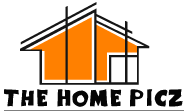



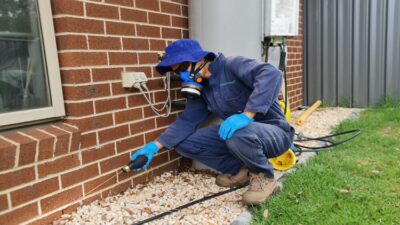
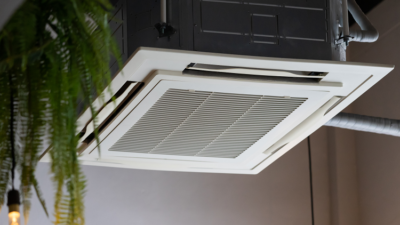
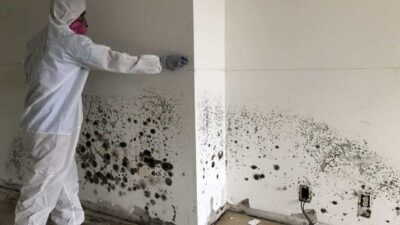
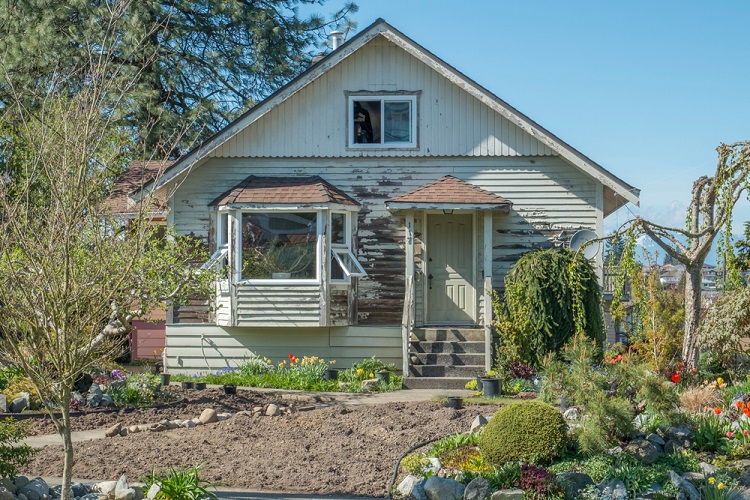
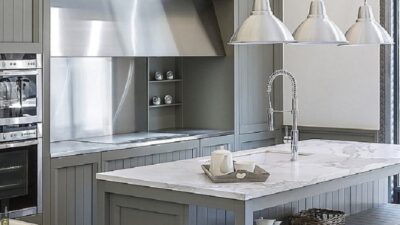
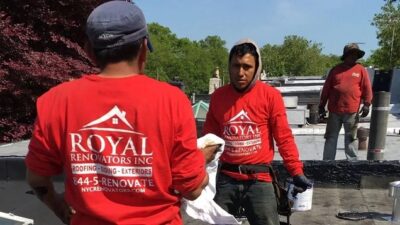
Comments